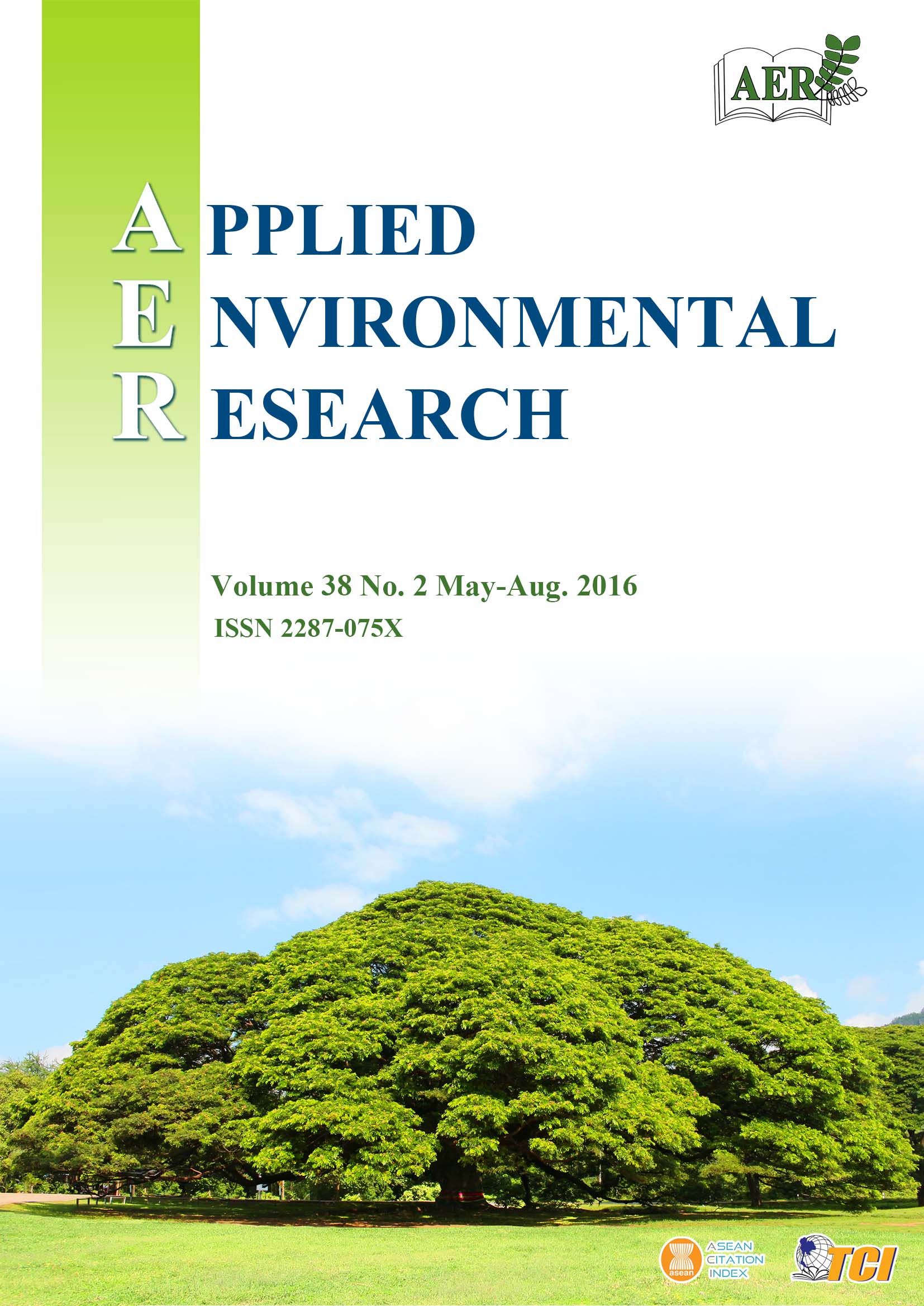Synthesis and Scaling up of Fe3+ by Sol-gel Method Doped on Ceramic Foam for Decolorization of Reactive Red Dyeing Wastewater
Main Article Content
Abstract
Wastewater from the Batik textile industry contains large amounts of dyestuff together with significant amounts of suspended solids (SS), dispersing agents, salts and trace amounts of metals. Since this can lead to severe environmental problems, proper wastewater treatment processes are essential. The synthesis of Fe3+ by sol-gel method doped on a ceramic foam for reactive red and disperse dyes removal from synthetic dye wastewater. In this research, the effect of color concentration, amount of catalyst and volumetric flow rates for industrial scale were studied. The Fe3+ catalyst was prepared by sol-gel method in which 3M of FeCl3 was used as a precursor. The synthesized catalyst was characterized by the EDX spectrum from an X-ray spectrometer. The surface morphology of the catalyst was investigated using a scanning electron microscope (SEM). To determine optimum operating conditions for catalytic testing, variations of disperse and reactive red concentrations (10 to 200 mg L-1) were used. The results indicated that the highest color removal efficiency (up to 96%) was observed when using Fe3+ catalyst; 4 pieces per liter of solution, and initial pH of 6.0. These conditions were then scaled up for a continuous packed bed column study. It was found that the optimal operating conditions obtained from the mathematical model for reactive red wastewater were: concentration of reactive red in the synthetic wastewater 20 to 80 mg L-1; amounts of catalyst 432.5 to 1,730 mg and volumetric flow rates of wastewater 20 to 200 mL min-1. Up to 84.85% of color removal efficiency was achieved.
Article Details

This work is licensed under a Creative Commons Attribution-NonCommercial 4.0 International License.
Published articles are under the copyright of the Applied Environmental Research effective when the article is accepted for publication thus granting Applied Environmental Research all rights for the work so that both parties may be protected from the consequences of unauthorized use. Partially or totally publication of an article elsewhere is possible only after the consent from the editors.

